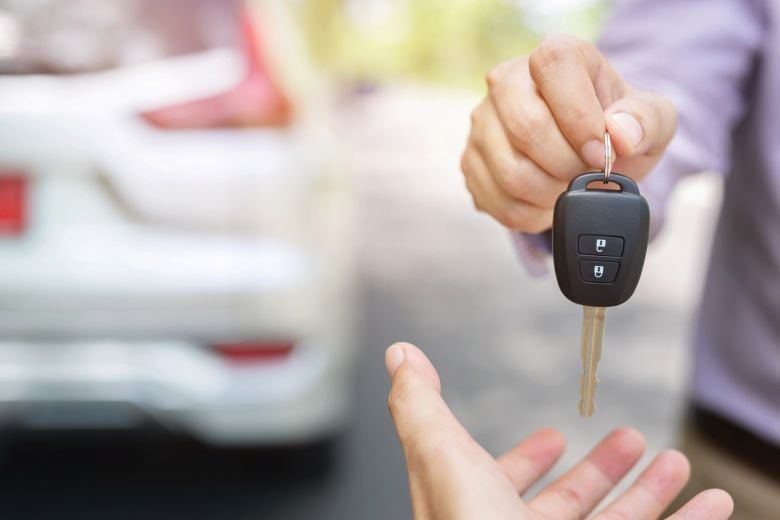
New Driver? Here's How To Stay Safe on the Road
- PEAK Squad
- PEAK
- May 19, 2025
Review these driving safety tips so you can learn how to be a safe driver!
Driving means fun and freedom, but many risks lurk on the road and new drivers need to be extra cautious about them. To that end, it's wise to review some safe driving tips and car maintenance tips for beginners.
Here's why:
- According to the National Research Council, newly licensed drivers are up to eight times more likely to be in a fatal car crash during their first six months behind the wheel.
- The Centers for Disease Control and Prevention (CDC) say car accidents are the number one cause of death among teenagers in the United States.
- Drivers aged 16–19 are involved in 9.1% of all accidents despite accounting for just 3.6% of all licensed drivers, according to National Safety Council researchers.
These sobering stats show why it's so important to brush up on smart car care practices and driving safety tips before hitting the road. The more you know, the better your chances of avoiding an accident.


Know the risks
Learning about the unique risks new drivers face is a great place to start. For novices, and especially for teenagers, these include:
Inexperience
Many new drivers simply don't recognize risks as well as more experienced motorists. They're also more prone to common mistakes like following too closely, accelerating too aggressively, and not adapting their driving to road and weather conditions.
Reduce your risk: Use extra caution as you gain experience. Always adjust your mirrors at the outset of a trip, increase your following distance, accelerate at a slow and even pace, and brake early and gradually.
If you haven't already, take a driver's ed course that includes hands-on training. It'll help you get more comfortable behind the wheel.
Not using seatbelts
You'd be surprised to learn just how many young people dismiss seatbelts. According to the CDC, more than 43% of American teenagers don't always buckle up when they're in someone else's car, and 56% of teens aged 16–19 who died in car accidents in 2020 weren't strapped in.
Reduce your risk: This one is simple. Always wear your seatbelt, and insist that your passengers wear theirs.


Night and weekend driving
Darkness raises road risk for all drivers, but especially for younger and inexperienced ones. Weekends are also dangerous for teens on the road: The CDC says that in 2020, half of all fatal accidents involving teenagers happened on Friday, Saturday, or Sunday.
Reduce your risk: Slow down, use your headlights, keep your speed in check, and avoid unnecessary trips at night and on weekends. Also, use your headlights in all lower-light conditions and make sure they're properly aimed and adjusted.
Speeding
Speeding is one of the worst habits a new driver can get into. It's even more hazardous when combined with wild lane changes and unsafe following distances. You know you're dealing with serious danger when a costly speeding ticket is one of the best possible outcomes.
Reduce your risk: Always obey posted speed limits. Slow down when road or weather conditions are poor, even if that means going below the limit.
Impaired and distracted driving
Young motorists drink, use drugs, and get distracted while driving at much higher rates, and research shows that mobile phones are even deadlier for drivers than alcohol. According to the National Highway Traffic Safety Administration, texting behind the wheel raises your accident risk six times more than alcohol does.
Reduce your risk: Always drive 100% sober and put your phone down — even at red lights. If you absolutely must use your phone while driving, pull off the road and come to a complete stop before doing so.
More driving tips for beginners
In addition to the driving tips mentioned above, follow these smart safety habits before you drive and during your trip:
Before driving
You worked hard to get your license. Now, it's time to work just as hard to make sure you never have an accident.
That work begins with these pre-driving safety tips:
- Know your vehicle: Get to know your car's layout, including the locations of all gauges and information displays. Pay attention to how your vehicle responds when you accelerate, brake, and turn — this will help you stay in control at all times.
- Manage your media: If you need to make a Bluetooth connection, program your navigation system, queue up a podcast, or do anything else involving media, do it before leaving your driveway so you can keep your full attention on the road.
- Make adjustments: Start with a check of all your mirrors, making sure they're optimized for full visibility. Then, set up your seat just the way you like it before shifting into drive since such adjustments can be dangerous when you're already on the road.


During your trip
To recap the key points made above:
- Use extra caution as you gain experience.
- Always wear a seatbelt.
- Drive carefully at night.
- Always obey the speed limit.
- Avoid impaired and distracted driving.
From there, work in these extra tips for new drivers:
- Give yourself lots of time. Whether you're going to work or heading out for some weekend fun, leave plenty of time to reach your destination. Don't rush — it can be deadly.
- Watch your blind spot. Most passenger vehicles have blind spots, which are areas around the vehicle that are very hard to see even with mirrors. To check your blind spot, you have to turn your head and look. Do it every time you change lanes or merge.
- Don't forget about fatigue. As the National Sleep Foundation notes, driving drowsy is just as dangerous as driving drunk. If you're tired, get off the road (or don't get on it in the first place). If you're on a long trip, take regular breaks to help prevent fatigue and "highway hypnosis."
- Be defensive. Defensive driving is all about actively scanning for potential hazards and taking early action to avoid them. Stay alert, keep your eyes on the road, and spot danger before it happens.
If you'd like to become a better defensive driver, consider driver training courses for license-holders looking to sharpen specific skills.
The importance of PEAK car care
Properly maintained vehicles are safer. Always make sure your tires are properly inflated, and maximize your visibility with PEAK's premium headlights, high-performance wiper blades, and a full reservoir of windshield wash.
Worn-out and faulty wiper blades can be a particular problem, since most drivers don't change theirs often enough. Protect your visibility in bad weather: explore ways to extend the life of your wiper blades and learn how to replace your windshield wipers once they're worn out.
If you're a new driver, you'll also be new to car ownership and our guide on how to maintain your first car is a must-read. You should also understand how scheduled maintenance works, since you'll have to take care of regular tasks like oil changes, fluid checks, and tire rotations.
Finally, stay on top of your seasonal vehicle care: the time is right to check out our spring vehicle maintenance checklist, which is chock full of helpful DIY tips for a safer vehicle.
Welcome to the road, and stay safe!

